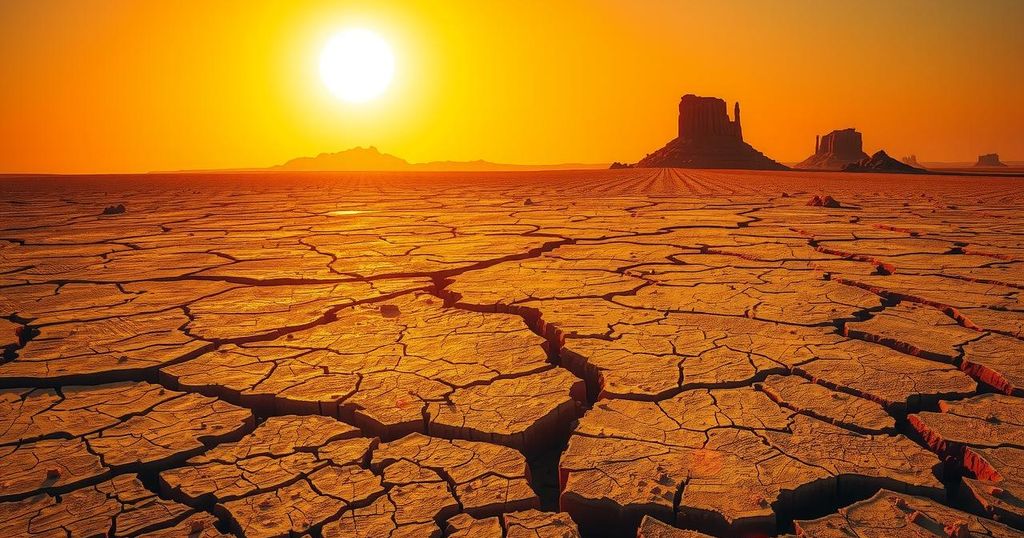Extreme Heatwave in India and Pakistan: Impacts and Challenges Ahead

India and Pakistan are grappling with an extreme heatwave, causing temperatures to soar dangerously. Early heat this season is impacting energy supplies, agriculture, and the health of residents, particularly vulnerable populations. Experts warn of dire consequences as rising temperatures test human survivability limits, indicating a critical threat to over 1 billion people due to climate crisis effects.
India and Pakistan are currently facing an extreme heatwave that represents a critical threat to public health, agricultural productivity, and energy supplies. Starting unusually early in the year, temperatures are projected to reach alarming heights over the coming days. The Pakistan Meteorological Department predicts temperatures could exceed normal levels by 8 degrees Celsius, with Balochistan likely to hit 49 degrees Celsius (120 Fahrenheit), comparable to the conditions in Death Valley.
Residents like Ayoub Khosa from Dera Murad Jamali have expressed concerns about the unexpectedly intense heat, highlighting serious issues such as prolonged power outages lasting as long as 16 hours daily. These blackouts exacerbate the oppressive heat, complicating life for citizens who are unprepared for such extreme conditions.
India is similarly affected, with its meteorological department alerting citizens to expect more heatwave days than usual. Delhi, with a population exceeding 16 million, has recorded temperatures over 40 degrees Celsius (104 Fahrenheit) frequently this month, significantly above seasonal averages. In Rajasthan, maximum temperatures have reached 44 degrees Celsius (111 Fahrenheit), severely affecting laborers, farmers, and even vulnerable populations like children and women.
Anita Soni from Thar Mahila Sansthan expressed her fears regarding the heat’s impact, specifically on health issues such as dehydration and illness among vulnerable groups. Farmer Balu Lal voiced that working under such conditions leaves individuals dangerously overheated, raising concerns over physical well-being and economic survival.
Experts warn that these escalating temperatures threaten human survival limits. Numerous fatalities have already occurred due to extreme heat, and projections indicate that by 2050, India may confront unprecedented levels of heat that could be unlivable. There is particular concern for pregnant women, who risk serious complications under these conditions, according to Neha Mankani from the International Confederation of Midwives.
Both India and Pakistan face severe ramifications from the climate crisis, with over 1 billion people at risk. The anticipated impacts include food shortages, droughts, and flooding. Climate change expert Mehrunissa Malik noted that agricultural cycles are disrupted, as crops are unprepared for extreme temperatures, leading to failing harvests and increased water demands in an already dry spell.
Tofiq Pasha, a farmer from Karachi, explained how early summers and extreme heat hinder crop production, with severe weather resulting in the loss of plants and pest infestations. This scenario threatens the livelihood of many farmers, showcasing the far-reaching consequences of climate change. Energy shortages have led to widespread electricity demand, resulting in train cancellations and school closures, further undermining the overall quality of life during this heatwave.
The ongoing heatwaves in India and Pakistan pose a severe threat to public health and agriculture, exacerbated by early onset and prolonged intensity. With temperatures reaching levels akin to those in Death Valley, critical issues like power shortages, health concerns, and agricultural failures are emerging. As climate change effects intensify, the livelihoods of millions and the overall stability of communities in this region are increasingly at risk.
Original Source: www.cnn.com







